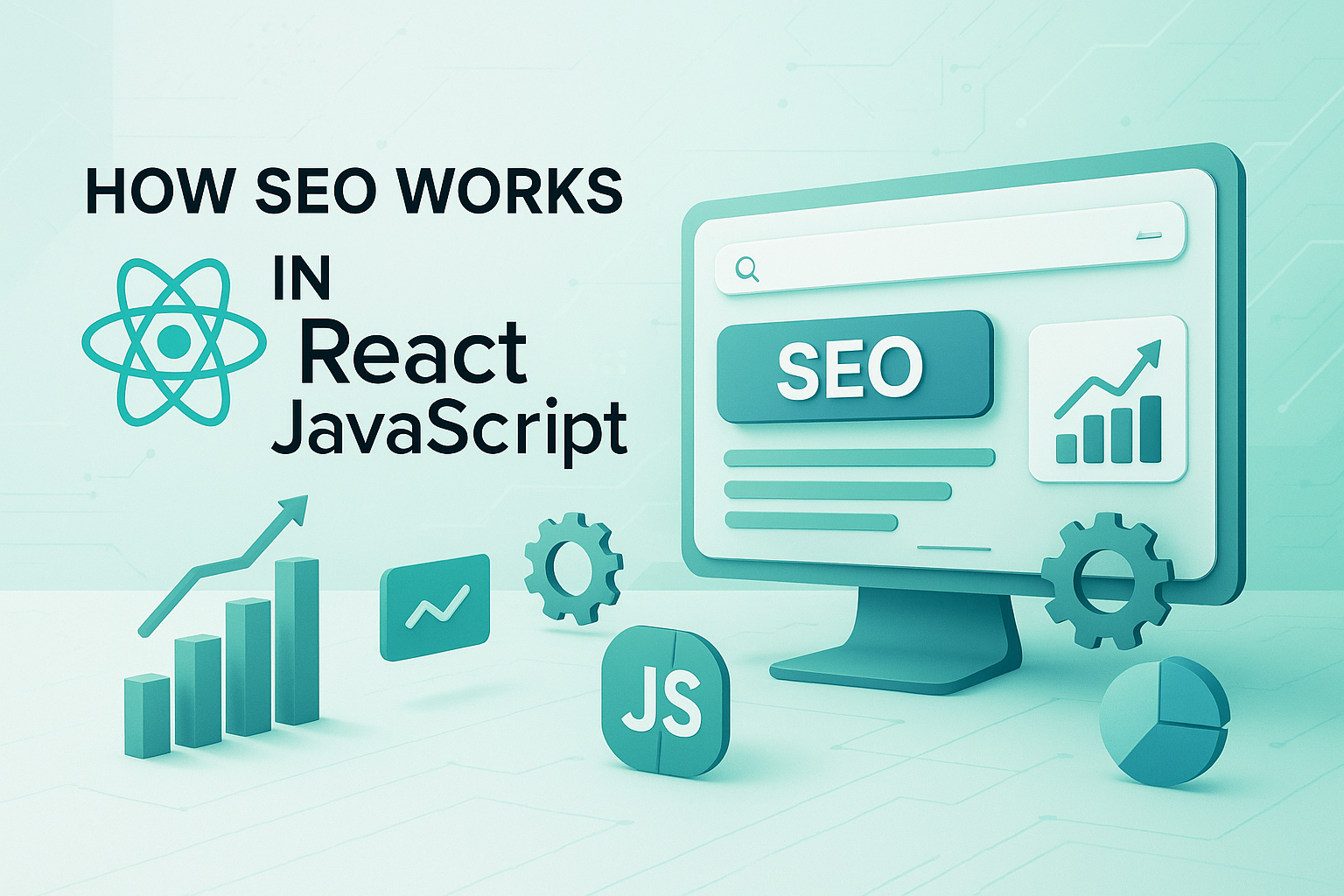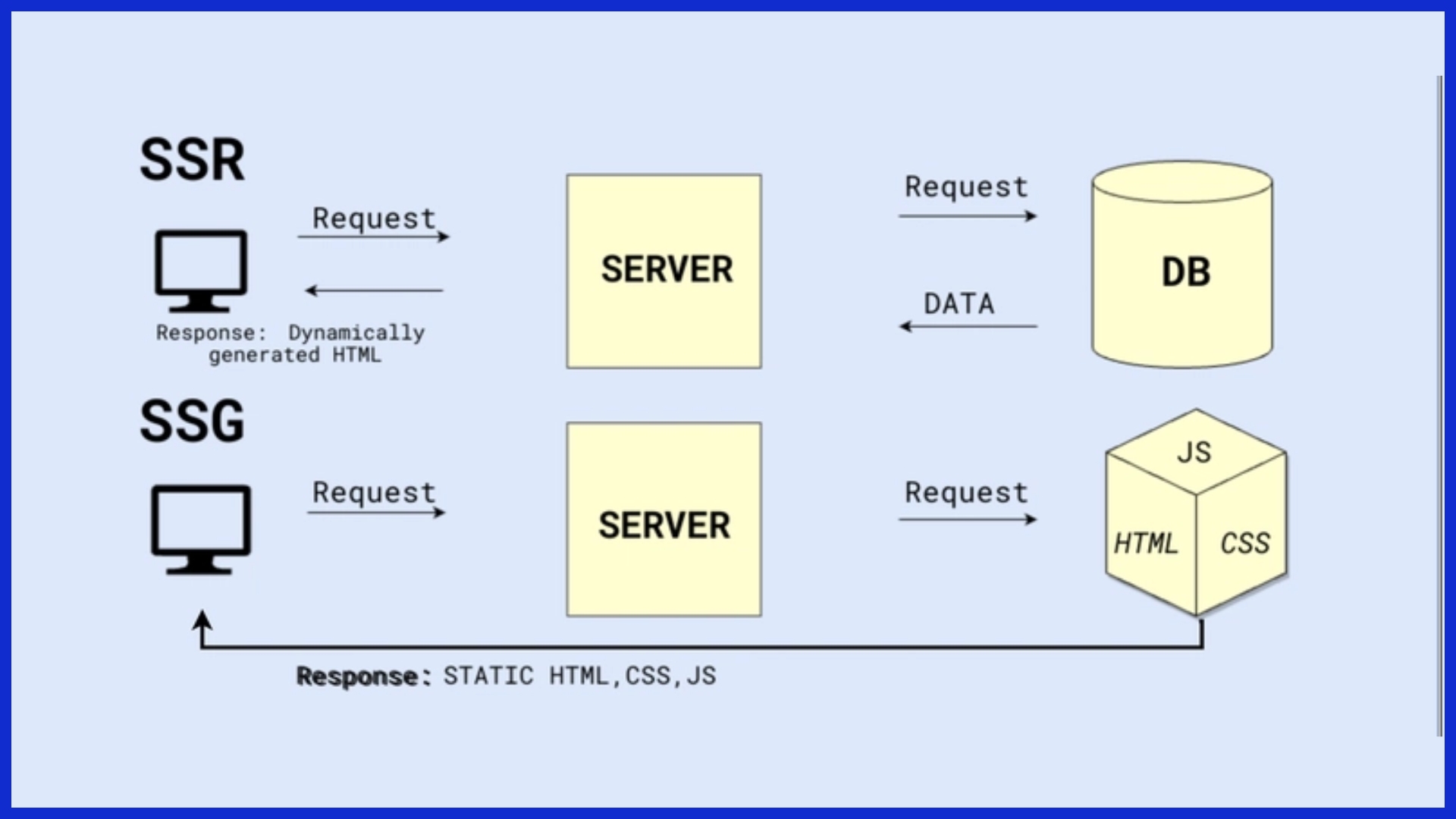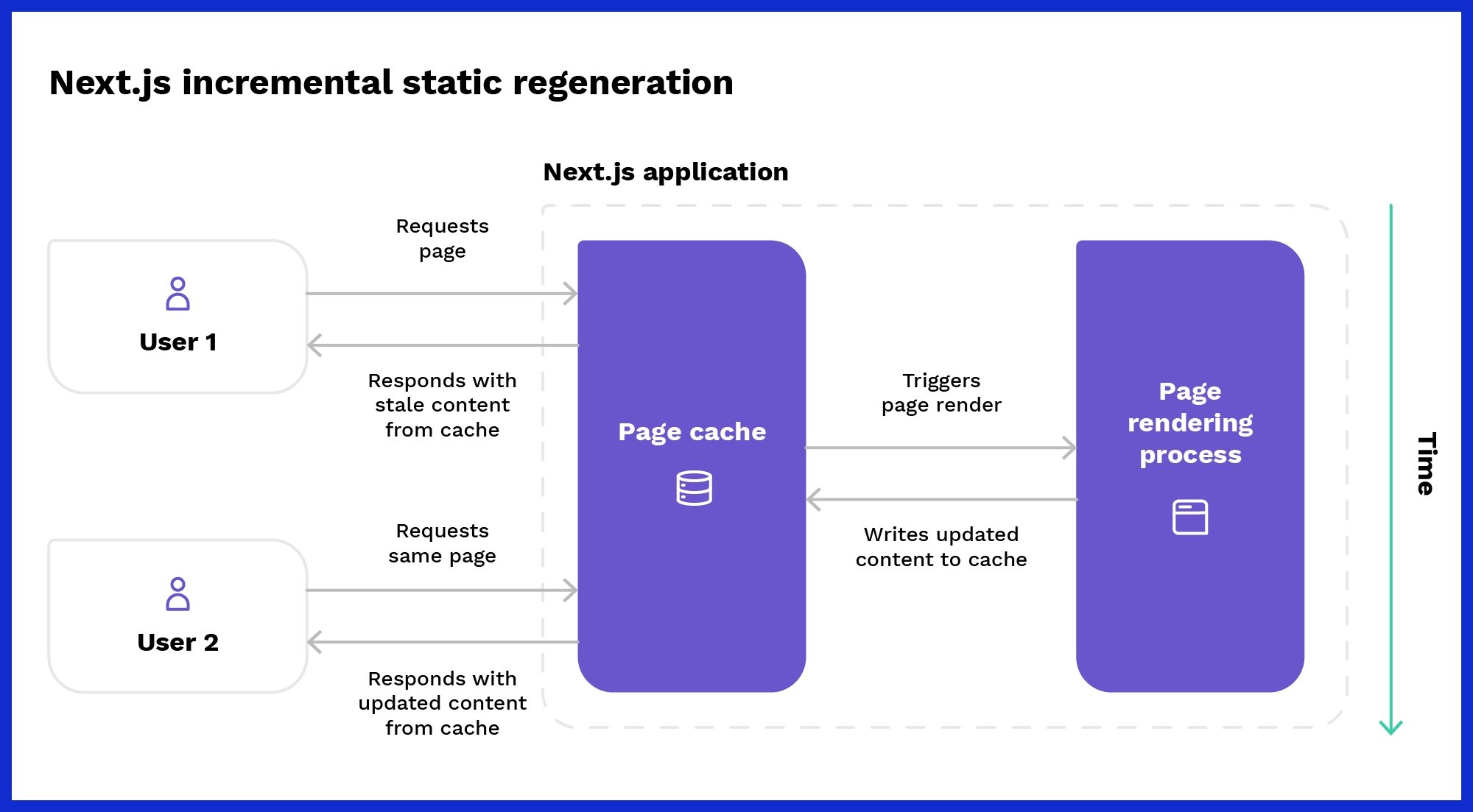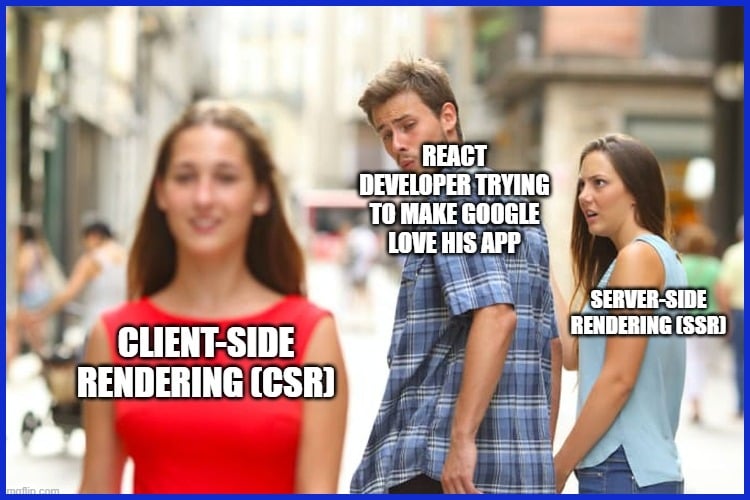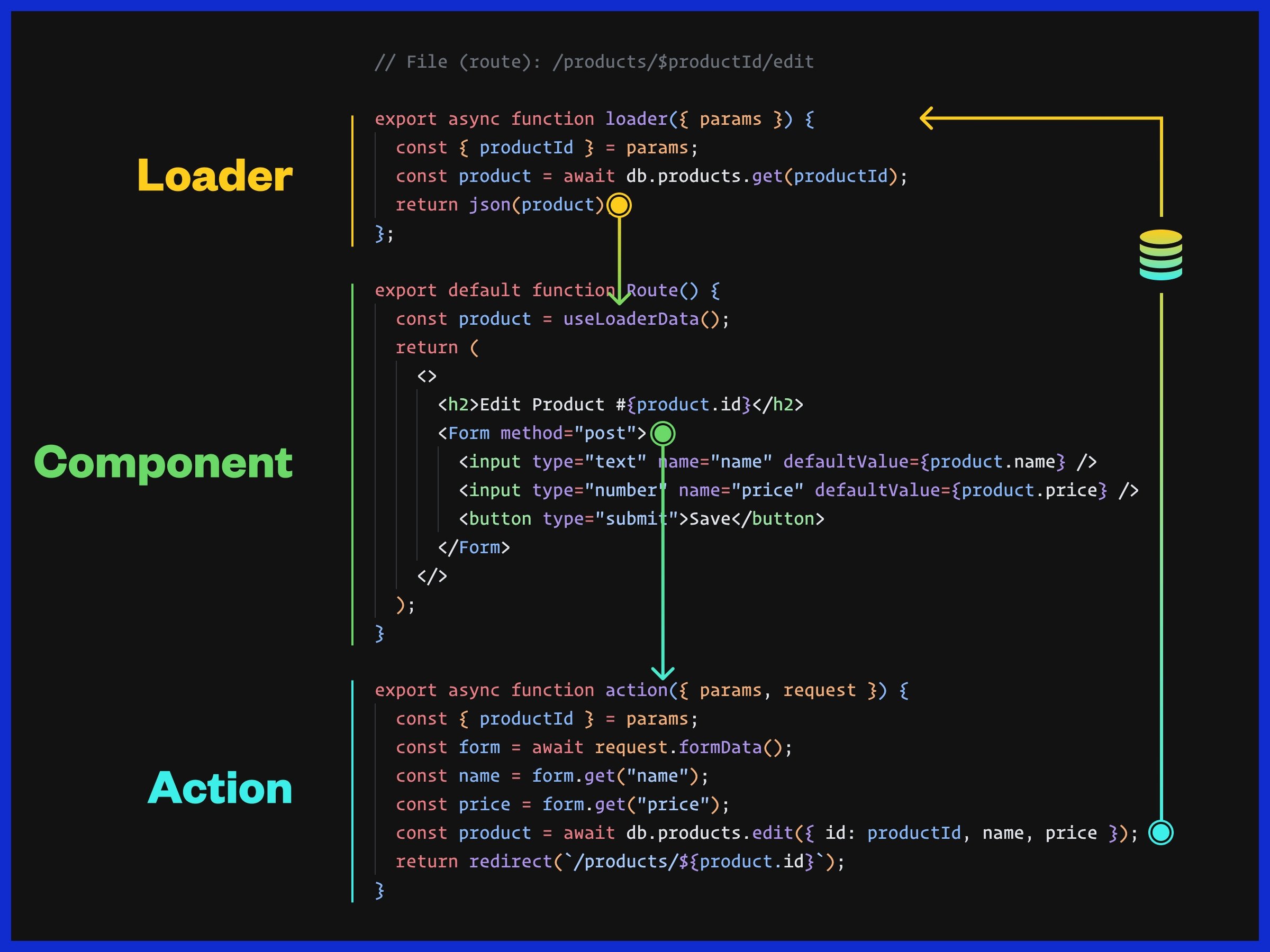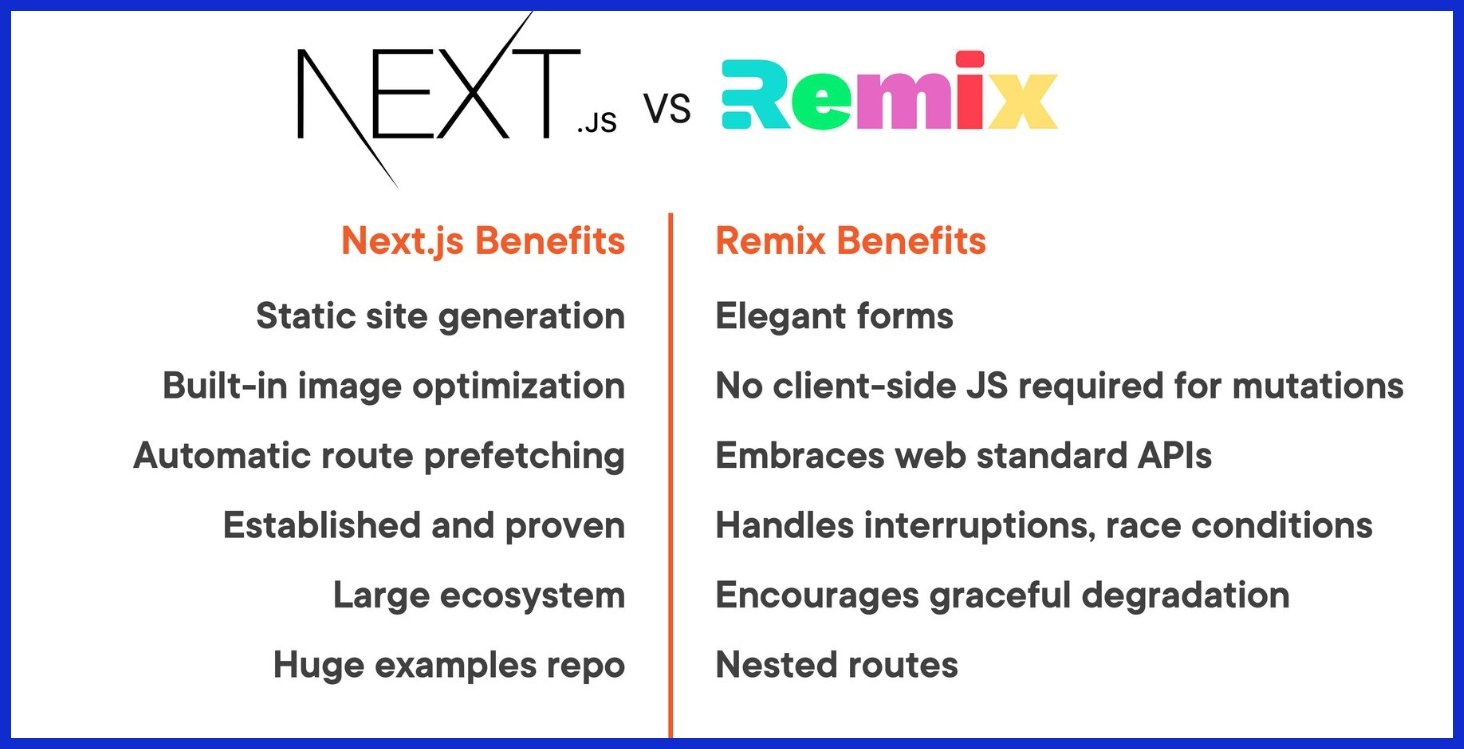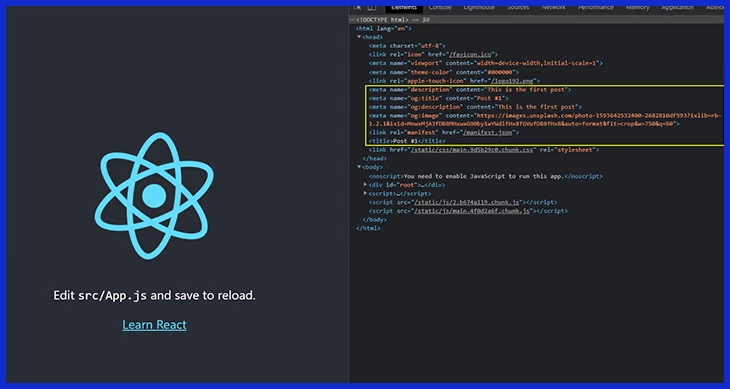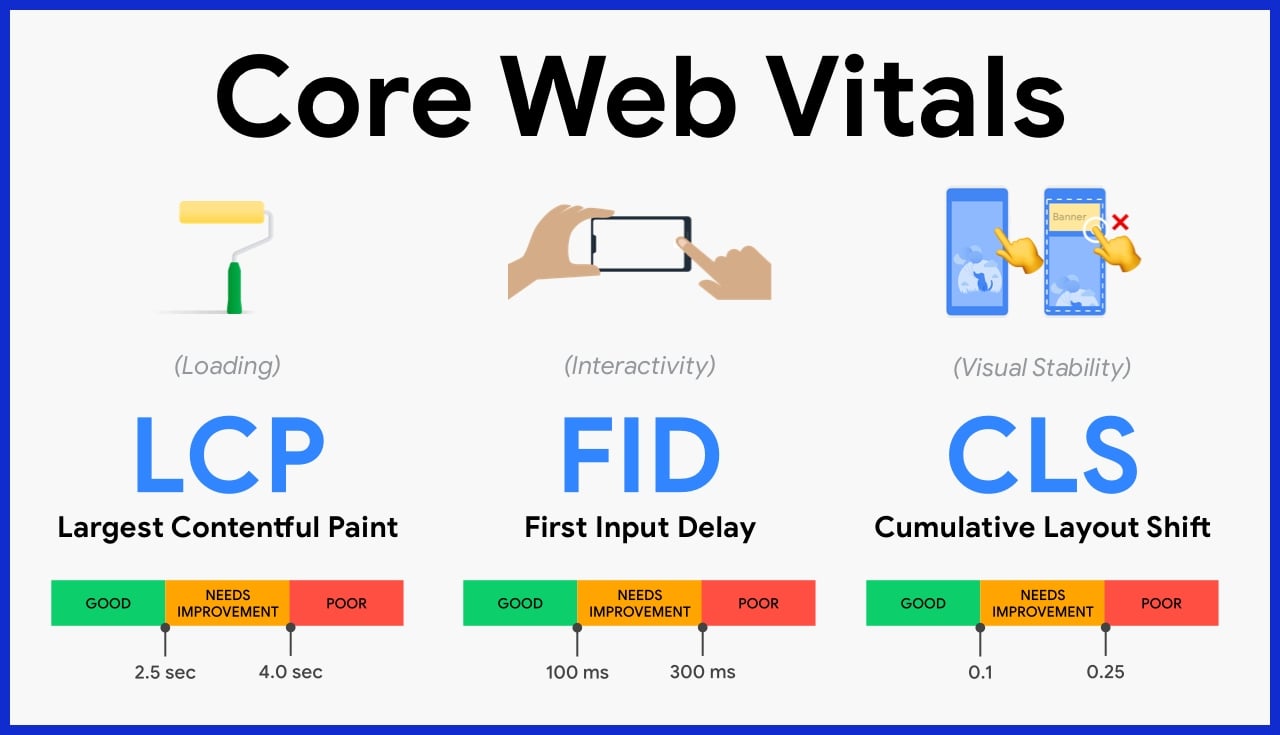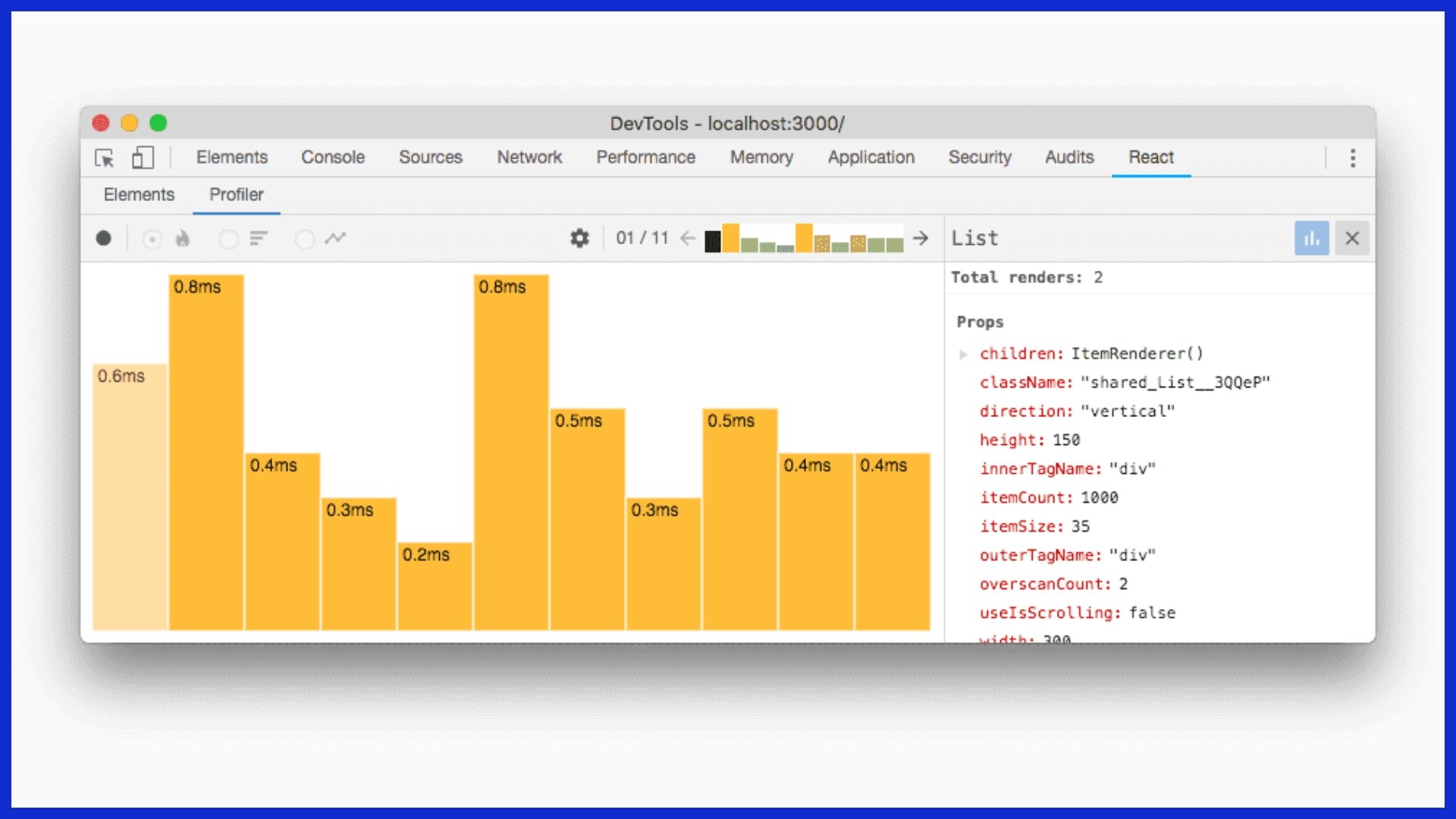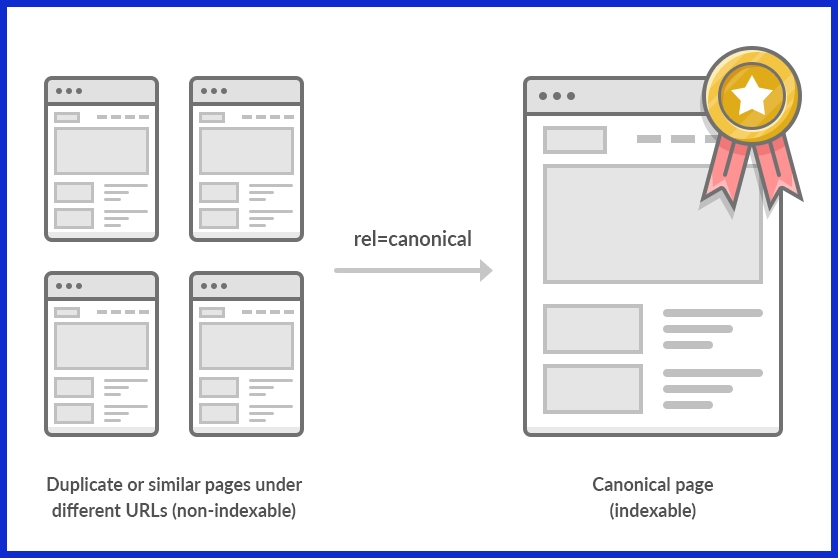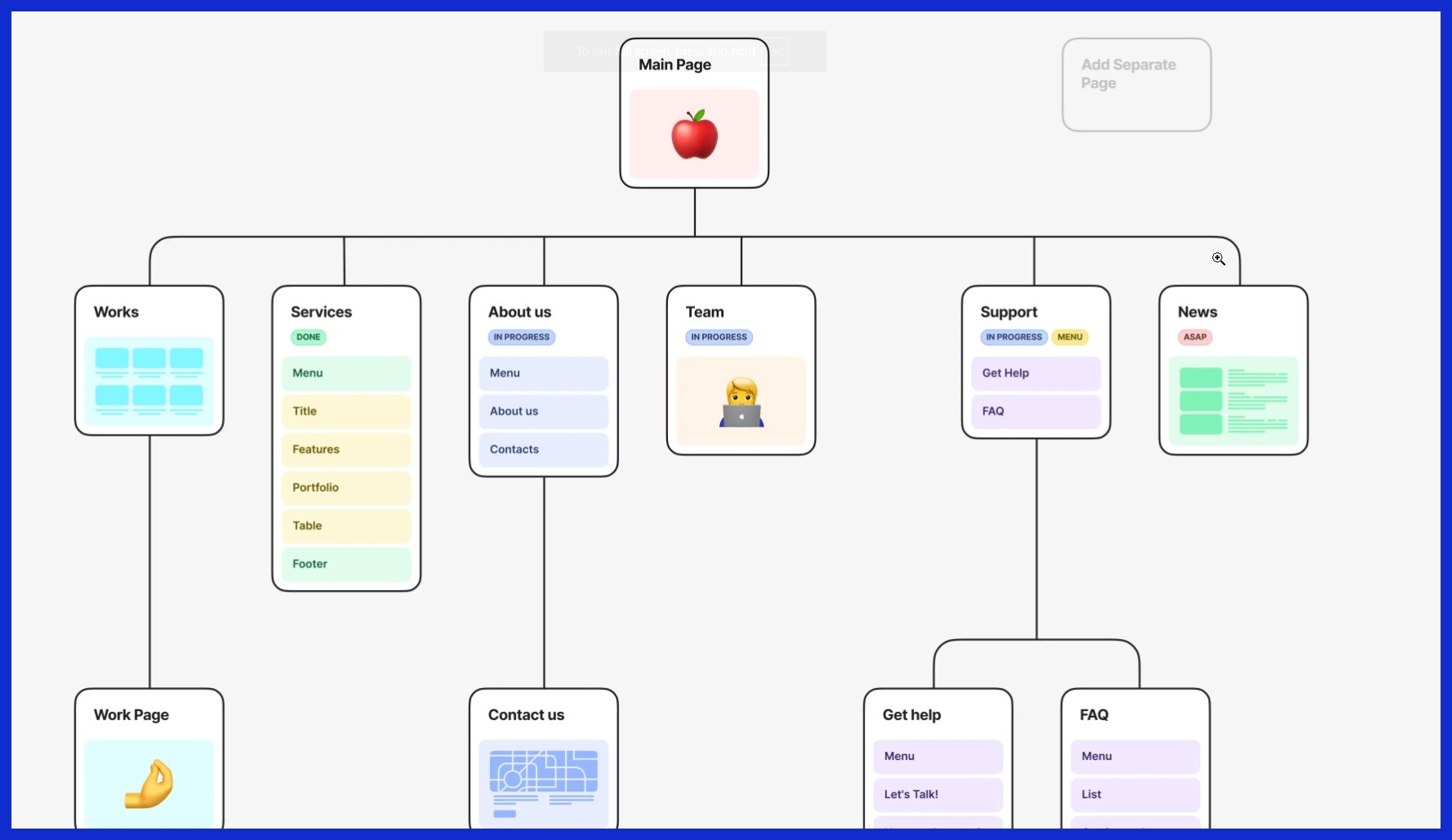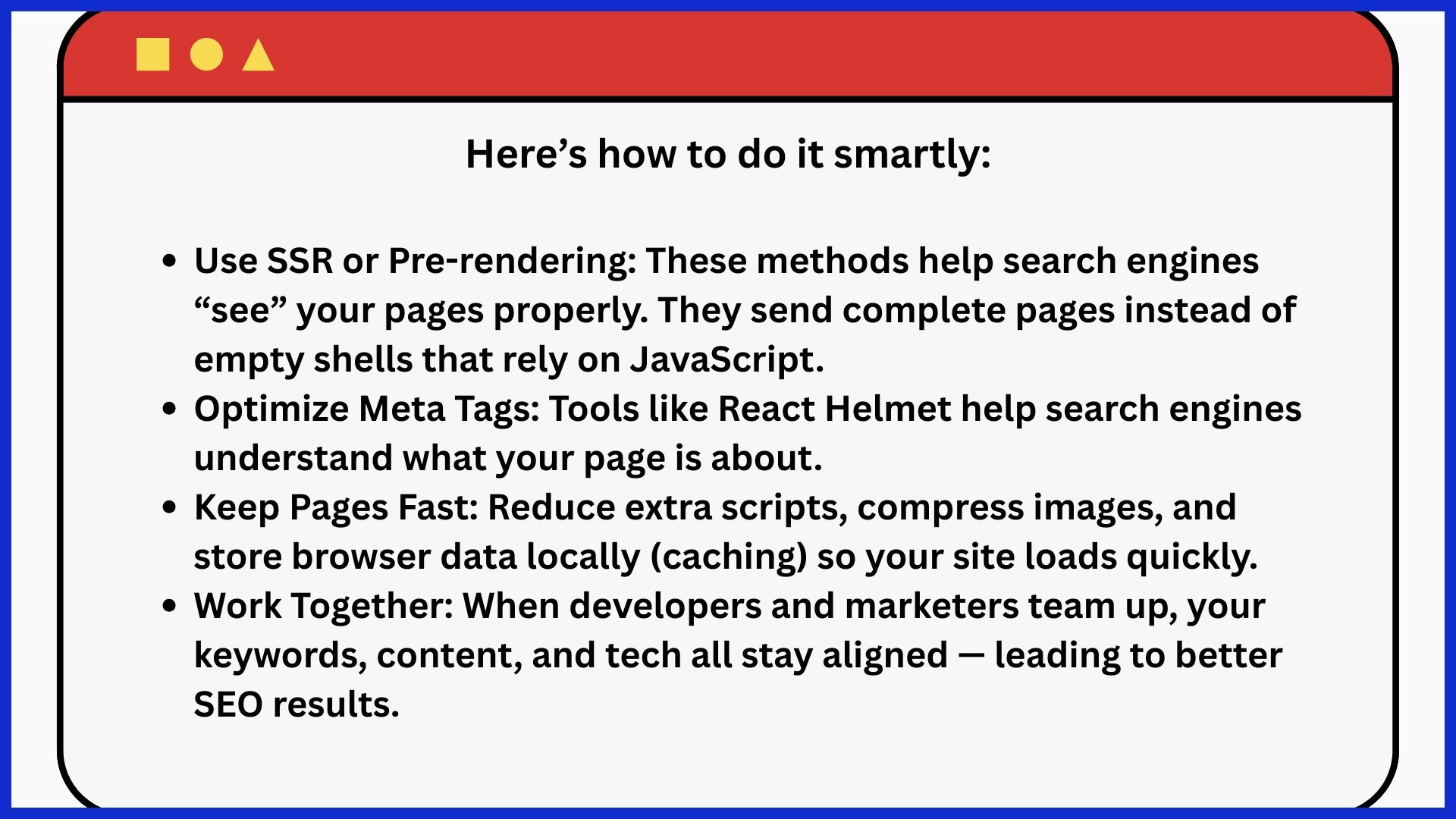Key Takeaways
-
Knowing the distinctions between client-side, server-side, and static site rendering will assist you in making smart decisions on React SEO.
-
Tackling JavaScript-heavy content and loading times is crucial for enhancing search engine visibility and user experience in React apps.
-
They don’t require advanced frameworks like Next.js, which provide built-in features that make SEO easier. This is another reason they are a great option for scalable, high-performing projects.
-
With dynamic meta and structured data, search engines always get the right information, increasing your rankings and CTR.
-
Clean URL structures, proper canonical tags, and regularly updated XML sitemaps help with crawling, indexing, and SEO health.
-
Active tracking and optimization, such as emphasizing Core Web Vitals and mobile-first indexing, ensure your React app remains on top in search performance worldwide.
React SEO is about making your ReactJS websites easy for search engines to discover, index, and rank. Contemporary web apps built with React experience SEO problems because of their client-side rendering.
Good React SEO mixes technical solutions, such as server-side rendering, with intelligent content approaches. For React readers, smart SEO means making your projects more visible and competitive on the web.
The Rendering Dilemma
The rendering dilemma is focused on how React apps deliver content to users and search engines. Should you go with server-side rendering, client-side rendering, static site generation, or incremental static regeneration? You need to balance SEO performance, server load, and development complexity.
React’s flexibility is both a blessing and a challenge. Every rendering strategy has its own trade-offs, especially for international businesses operating at scale.
Comparison of Rendering Strategies for React SEO
1. Client-Side Rendering
Client-side rendering is the norm for React applications, particularly in single-page applications (SPAs). With all the heavy lifting going on in the browser, it’s challenging for search engines to view your content immediately. Since crawlers are unable to render JavaScript effectively, essential content and metadata may remain invisible, negatively impacting SEO rankings. To address this issue, developers often employ techniques like dynamic rendering, prerendering static HTML, or enhancing metadata with React Helmet.
Optimizing the bundle size and lazy-loading non-critical scripts are essential strategies. Minimizing load times is crucial because both users and search engines respond better to quick, accessible pages, ultimately improving overall SEO performance.
Incorporating practices that enhance the visibility of React web apps is vital for SEO success. For instance, using semantic HTML and ensuring a friendly website structure can significantly boost your site’s performance in search engine results. By focusing on these elements, developers can create rich user interfaces that engage users and improve their overall experience.
-
Pros: Less server load, easier to scale, and more interactive experiences.
-
Cons: Slower initial page loads, search engines may miss content, and more complex SEO fixes.
2. Server-Side Rendering
SSR renders pages server-side, sending pre-formed HTML to users and crawlers. Search engines crawl content immediately, and visitors experience quicker first paint. This is wonderful news for SEO, particularly for landing pages or sites where content needs to be crawled and indexed right away.
Good SSR infrastructure with something like Next.js or ReactDOMServer is the trick. Misconfigurations can cause partial rendering or duplicate content problems, which negate SEO increases. SSR is ideal for content-heavy or marketing-oriented React apps.
It can put server resources under strain for massive or high-traffic sites.
-
Pros: Fast initial load, better crawlability, improved SEO out of the box.
-
Cons: Higher server strain, more complex setup, ongoing infrastructure needs.
3. Static Site Generation
Static site generation delivers incomparable speed and dependability. Tools such as Gatsby or Next.js statically export React pages as static HTML, which is SEO gold. These pages are easy for search engines to crawl, and they don’t cause much load on your server.
For blogs, documentation, or company sites that don’t update too frequently, SSG hits the sweet spot. Static is fast, but changes require a rebuild. Automated deployment pipelines help keep content fresh without sacrificing performance.
SSG won’t fit every situation, especially if visitors demand immediate interactivity.
-
Pros: Fastest load times, easy to cache, very SEO-friendly.
-
Cons: Less dynamic, updating content requires rebuilds, not ideal for highly interactive apps.
4. Incremental Static Regeneration
ISR allows you to update static pages on a per-page basis, mixing the performance of static sites with the dynamic flexibility of React apps. With ISR, such as in Next.js, you can regenerate individual pages without a complete rebuild.
Caching policy is important. Freshness and consistency have to be balanced. ISR works well for big sites or e-commerce sites where certain pages are updated frequently, but the majority are static.
It delivers SEO benefits of static HTML and supports rapid, focused updates.
-
Pros: Combines static speed with fresh content, efficient updates.
-
Cons: More complex caching, some content may lag behind real-time changes.
Common React SEO Hurdles
React’s power and flexibility make it a top choice for web apps, but its client-side rendering (CSR) often clashes with how search engines crawl sites. Since React loads content via JavaScript, crawlers can hit blank pages or miss vital information, especially on JS-heavy sites. This can cause product pages, blog posts, or navigation links to go unseen in search results. The fix lies in using server-side rendering (SSR) or prerendering tools like React-snap to generate static HTML that’s crawler-friendly.
Dynamic metadata also poses hurdles, but tools like React Helmet help inject proper tags for each route. Proper routing, consistent URLs, and reduced third-party scripts are equally key to avoiding duplicate or orphaned pages. While old SEO tactics don’t map cleanly to React, modern solutions—SSR, prerendering, structured data, and optimized assets—bridge the gap between smooth user experiences and solid search visibility. With the right setup, you can keep your React app fast, interactive, and discoverable.
Essential SEO Solutions
React’s flexibility brings its own SEO challenges, especially for single-page applications (SPAs) that are notoriously difficult for search engine crawlers to make discoverable and manage metadata. To conquer the search game, you need actionable solutions that enhance overall SEO performance and are strategic and scalable.
-
Implement SSR so search engines can index content consistently. SSR frameworks like Next.js serve up HTML at page load, making it easier for bots to see your content.
-
Implement lazy loading of images and scripts to accelerate perceived page loads. Core Web Vitals rank. Load assets only when needed.
-
Control metadata on a per-page basis dynamically for relevance and CTR maximization. Include tailored meta descriptions that are between 150 and 160 characters for each page.
-
Add schema to give search engines a specific context. This increases the likelihood of rich snippets and higher visibility.
-
Watch for case-sensitive URLs or those with trailing slashes to prevent duplicate content. Search engines view /Home, /home, and /HOME as separate pages.
-
Have OG tags. These tags summarize content and help links look better on Facebook, LinkedIn, and more.
-
Manage 404s and client-side routing elegantly. Custom error pages and error tracking help you avoid the SEO penalties of broken or outdated content.
Advanced Frameworks
Frameworks make React SEO less of a pain. Next.js, for example, provides out-of-the-box server-side rendering and static site generation, rendering your content immediately crawlable. Gatsby allows speedy static site builds and includes a powerful plugin ecosystem for SEO work.
Remix’s focus on performance and routing helps reduce client-side errors that drag rankings down. By leveraging these frameworks, you benefit from automatic metadata management, straightforward lazy loading implementation, and routing patches baked in.
Next.js is notable for blending server-side rendering with API routes, which is ideal for dynamic content sites requiring speed and flexibility.
Check out this table for another list of frameworks:
|
Framework |
SSR Support |
Static Generation |
Metadata Management |
SEO Plugins/Features |
|---|---|---|---|---|
|
Next.js |
Yes |
Yes |
Built-in |
Strong |
|
Gatsby |
Limited |
Yes |
Plugin-based |
Extensive |
|
Remix |
Yes |
No |
Manual |
Moderate |
|
CRA |
No |
No |
Manual |
Minimal |
Dynamic Metadata
Dynamically updating metadata is essential to React apps. React Helmet is the de facto library allowing you to define titles, descriptions, and Open Graph tags per route. Be sure to optimize these on a per-page basis.
For example, tune the title tag to the page’s primary keyword and maintain search-friendly meta descriptions under 160 characters. Title tags should reflect the primary subject. Be descriptive.
Structured Data
-
Add schema.org markup for articles, products, reviews, or FAQs.
-
Use JSON-LD for structured data. Google suggests.
-
Verify with Google’s Rich Results Test to catch implementation errors.
-
Monitor CTR and organic traffic fluctuations after schema deployment.
-
Modify schema types as your content changes.
Rich snippets, such as star ratings, event dates or FAQ accordions, can enhance your results beyond the competition. Structured data assists search engines in understanding your content, increasing the chances of your page appearing in rich results.
Keep an eye on how it’s performing and adjust your strategy according to actual results.
Optimizing Application Performance
Fast and smooth apps are important for both users and search engines. If your React app loads slowly, people leave, and your SEO suffers. Google checks this using Core Web Vitals — which measure how fast your site loads, how quickly it reacts, and how stable it looks while loading.
React apps can get heavy because of large JavaScript files, so try code splitting — only load what’s needed first, then load the rest later. Lazy loading helps too, by loading images or sections only when users scroll to them. Server-side rendering (SSR) is another big win since it sends a ready-to-view page from the server, which helps both users and crawlers see content faster.
If your app shows lots of data (like product lists or dashboards), virtualize it — only load what’s visible on the screen. Use debouncing and throttling to control how often actions happen (like search boxes or scrolling), so your app doesn’t lag.
Finally, always check your app’s speed using tools like React Profiler or Lighthouse and fix anything that slows it down.
Keeping your app fast makes users happy and helps your site rank higher in search results.
Mastering URL Structure
A logical and clean URL structure is the backbone of effective React SEO. When you organize your content with SEO-friendly URLs, everyone wins. Search engines need unique URLs to index and rank each page, while users love obvious paths that indicate what’s coming.
For example:
serpninja.io/blog/angular-seo/
…is better than
serpninja.io/blog?id=angular-seo/
This choice is an SEO investment. Including relevant keywords in these paths can have a direct impact on visibility on the results page. Good URL hygiene and managing redirects vigilantly ensure you’re not wasting link juice or leaving broken links everywhere. Every page gets its fair share.
Clean Routing
Clean routing is all about making navigation easy for users and crawlers.
React Router is your best friend here, allowing you to construct natural URLs like:
/services/seo or /products/blackjack-tips.
Don’t do deep nesting like:
/blog/2024/06/seo/react/guide/article.
Make it easy to parse and remember. Too much complexity baffles both crawlers and visitors, undermining the clarity that search engines demand. Regular audits are key. Route bloat creeps in over time, especially as new features launch.
Review your structure every quarter and question if this path helps humans and bots understand what’s here. If not, simplify.
Canonical Tags
Duplicate content is a quiet SEO assassin. Canonical tags are your React apps’ insurance policy, telling search engines what page to prioritize. This becomes particularly crucial if your dynamic routing or parameters could give rise to several URLs for the same content.
Add canonical tags () to the best URL. As your site evolves, revisit these tags. Pages get merged, divided, or relocated, and stale canonicals can damage rankings. Always watch their effect by measuring organic traffic fluctuations and pages indexed to verify that search engines are indeed dancing to your tune.
Sitemap Generation
-
Crawl your React app’s dynamic and static routes and generate an XML sitemap. This directs search engines to all findable pages.
-
Include all public-facing URLs: core pages, blog posts, product listings, and anything you want indexed.
-
Automate sitemap updates so that any new content or de-listed pages on your site at the moment are immediately updated in the file.
-
Submit the sitemap directly to Google Search Console, which increases crawlability and makes search engines pick up changes quicker.
A Proactive SEO Strategy
To stay visible online, your SEO strategy shouldn’t just react — it should plan ahead. Being proactive means getting ready before search engines change their rules or algorithms.
Continuous Monitoring
Being on top of it continuously is the key to a proactive SEO strategy. With analytics installed, monitor things like bounce rate, average session duration, and crawl errors. They expose how actual users and crawlers consume your React app.
If organic traffic falls off a cliff, catch it before it catches your revenue with alerts. Adjust strategies based on what the data tells you. Maybe a new third-party script is slowing down page load, or your SSR implementation isn’t rendering the right content for search bots.
Real-time data enables you to pivot fast, meaning that you won’t suffer extended ranking losses. Working across technical and marketing teams means that issues are flagged and fixed efficiently.
Core Web Vitals
Google measures how users feel when visiting your site using three things:
-
Loading speed — how fast your site shows up.
-
Interactivity — how quickly buttons and links respond.
-
Visual stability — whether your layout jumps around as it loads.
To improve these:
-
Make your JavaScript bundles smaller.
-
Use lazy loading for images.
-
Compress large files.
-
Leave space for images and ads so they don’t shift your layout. Check your progress using Google PageSpeed Insights and keep adjusting until your site runs smoothly.
Mobile-First Indexing
Most people browse on phones, and Google ranks your mobile site first.
-
Make sure your design adjusts well to different screen sizes.
-
Keep fonts readable and buttons easy to tap.
-
Test your mobile version often with Google Search Console.
-
Don’t hide important content behind pop-ups or lazy loaders.
In short, think mobile first, mobile fast. A site that’s easy to use on a phone will perform better everywhere.
Conclusion
Being proactive with React SEO means thinking ahead — not just fixing issues as they come up. From optimizing Core Web Vitals to ensuring your mobile site runs smoothly, every detail adds up to better visibility and happier users. Keep monitoring your data, stay flexible as search engines evolve, and continue refining your setup with tools like SSR, pre-rendering, and React Helmet.
And if you ever need expert help fine-tuning your SEO strategy or improving your site’s technical performance, check out SERPninja — our team specializes in helping websites rank smarter, faster, and stronger.
Frequently Asked Questions
What is the main SEO challenge with React applications?
React applications typically utilize client-side rendering, which can hinder search engine crawlers’ ability to access content, negatively impacting SEO rankings and overall website performance.
How can server-side rendering (SSR) help with React SEO?
Server-side rendering in React applications creates HTML on the server, making it easy for search engine crawlers to access content and improving overall SEO performance.
Why is optimizing URL structure important for React SEO?
A neat, clear URL structure assists search engines and users in discerning page content, improving overall SEO performance, and enhancing user engagement for your React application.
What are common React SEO issues?
Common problems in a React application include missing meta tags, poor crawlability, slow load times, and duplicate content, which affect overall SEO performance.
How does application performance affect SEO in React?
Faster load times enhance user experience and boost reactjs seo rankings.
What are essential solutions for React SEO?
Utilizing SSR or static site generation, along with adding meta tags and optimizing performance, enhances overall SEO performance for React applications.
How can a proactive SEO strategy benefit React applications?
A reactive SEO strategy enhances your ReactJS applications’ optimization to get out in front, address search engine changes, and sustain high rankings in the marketplace.


